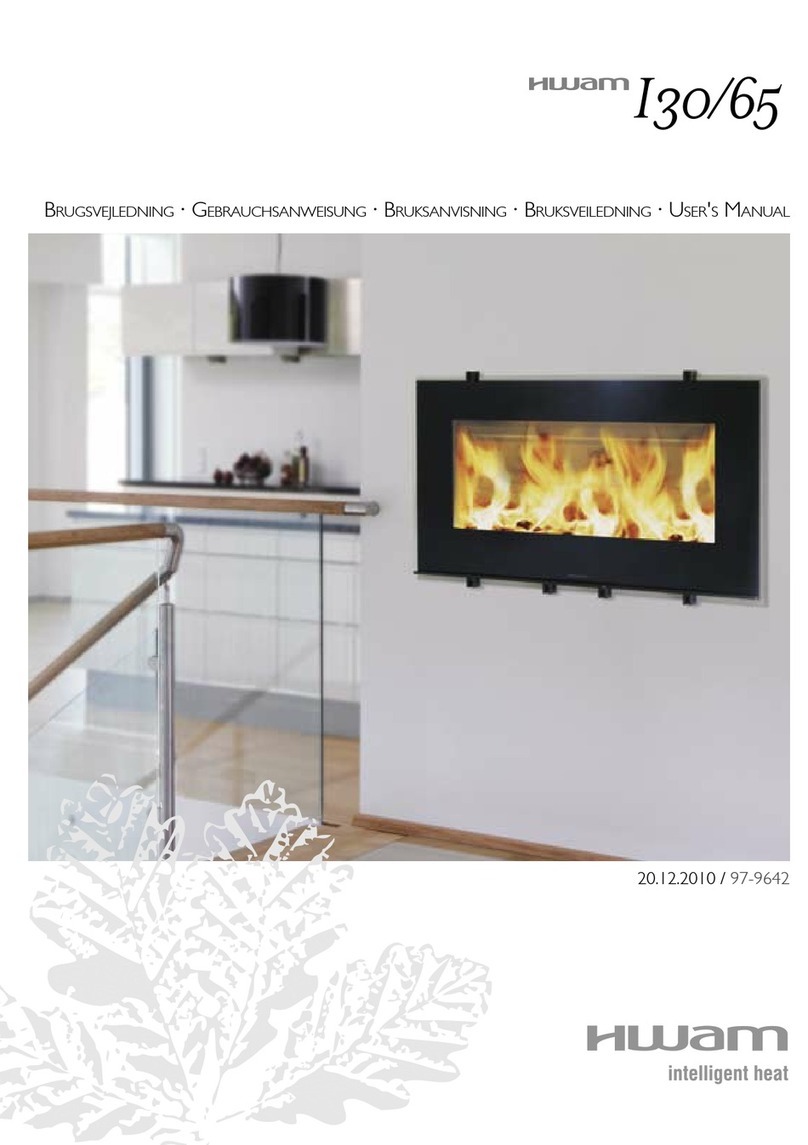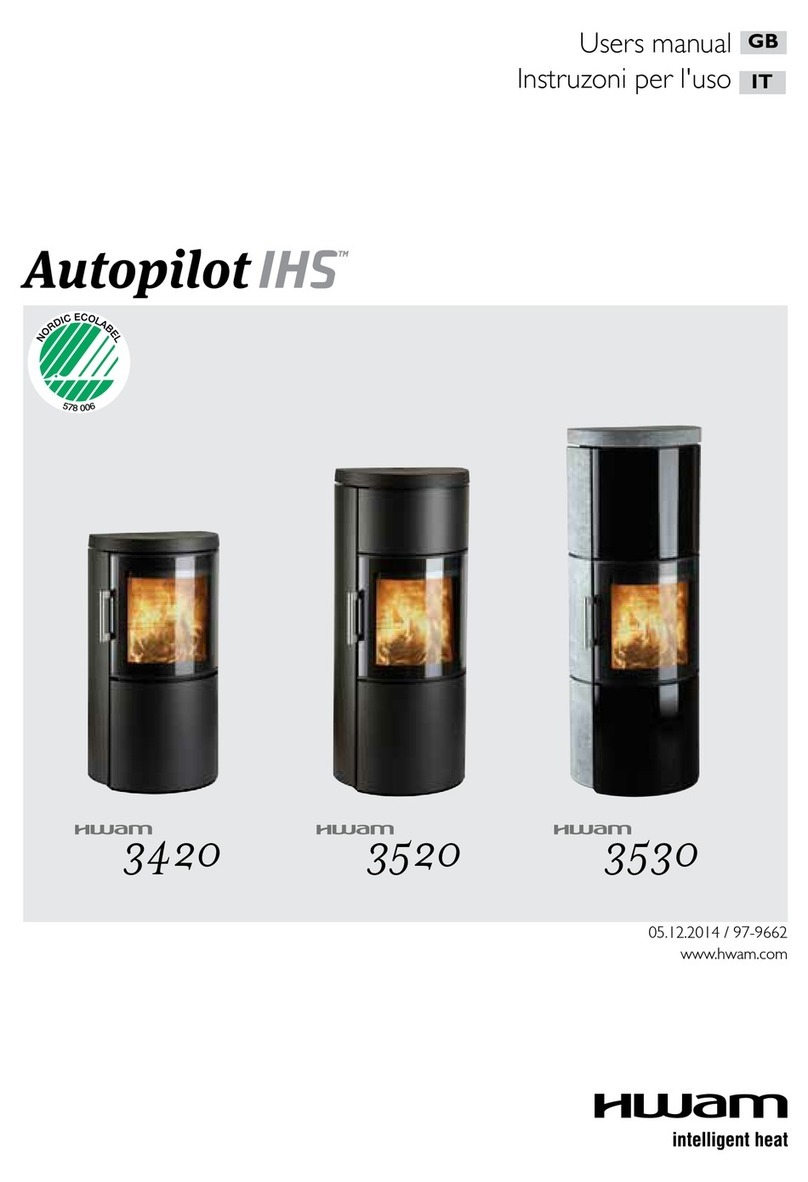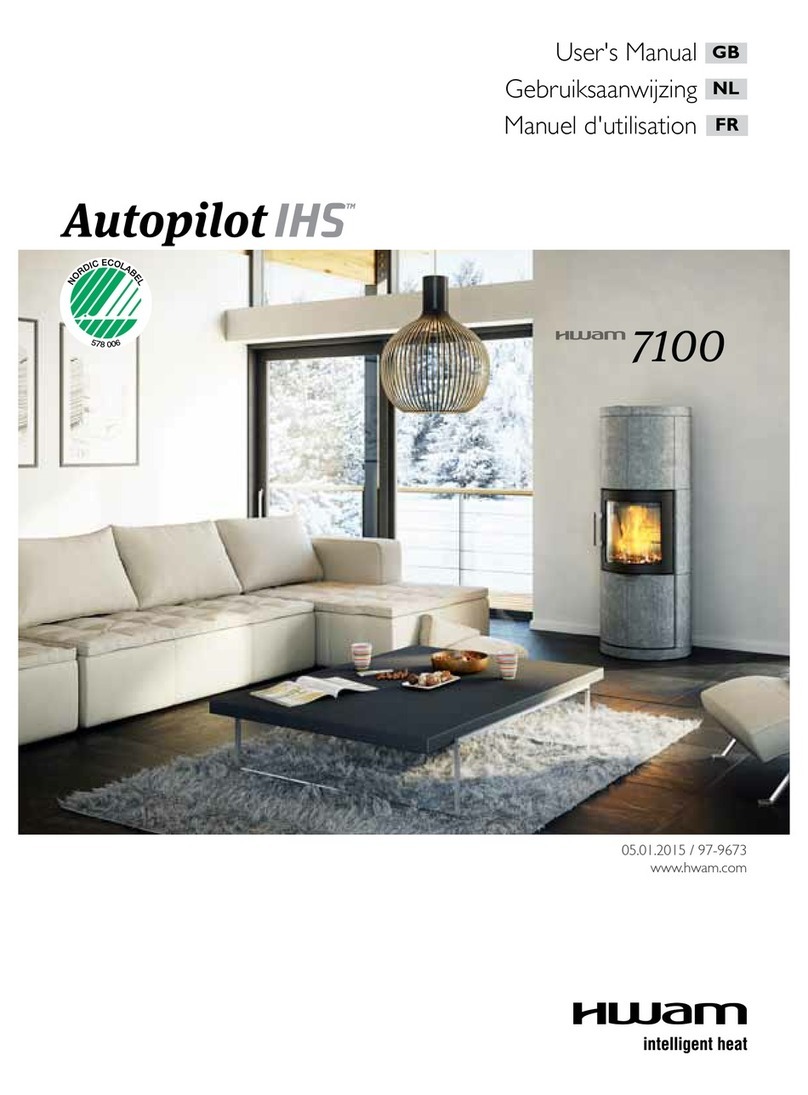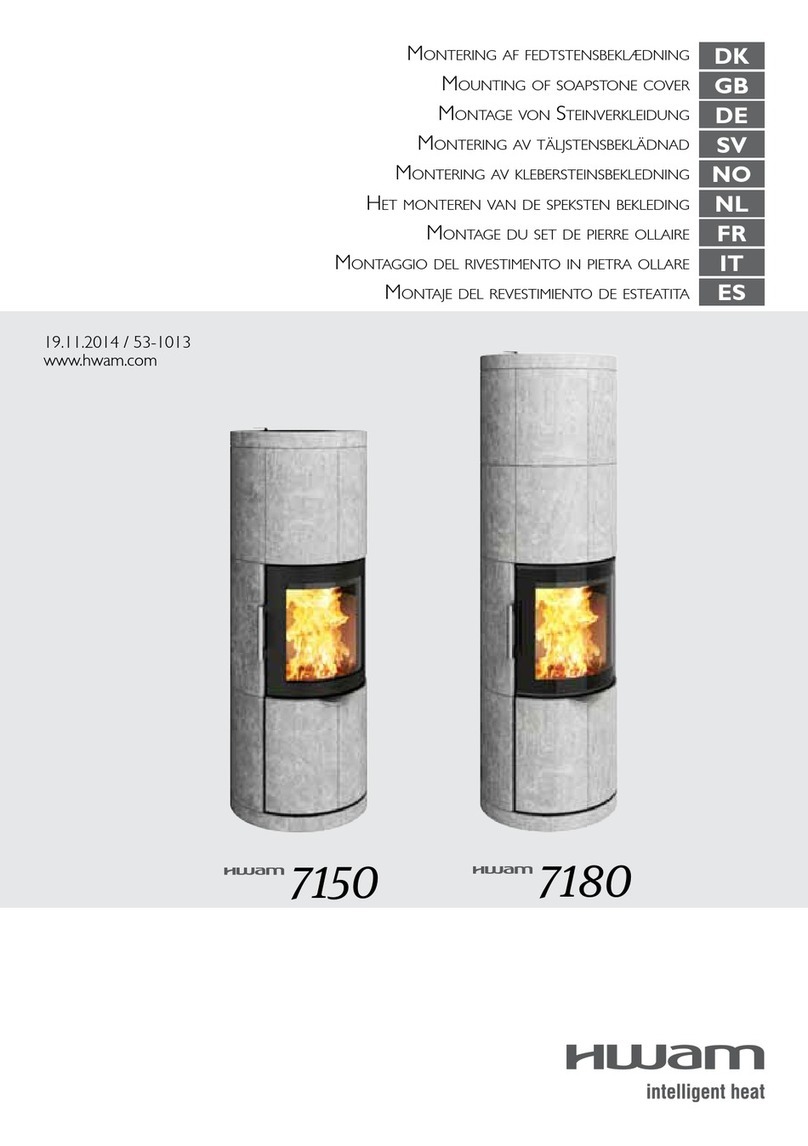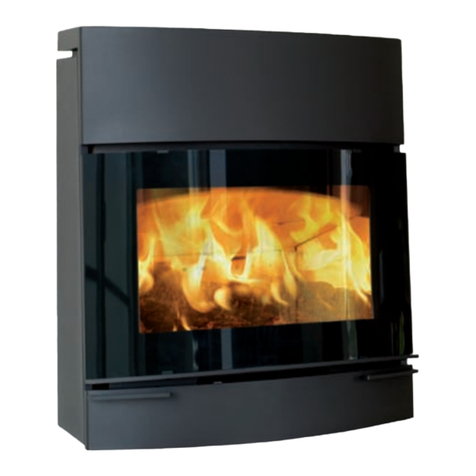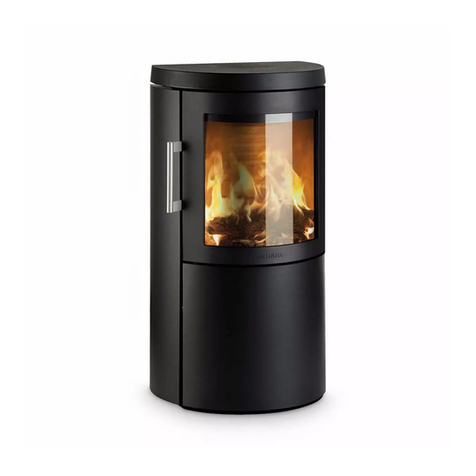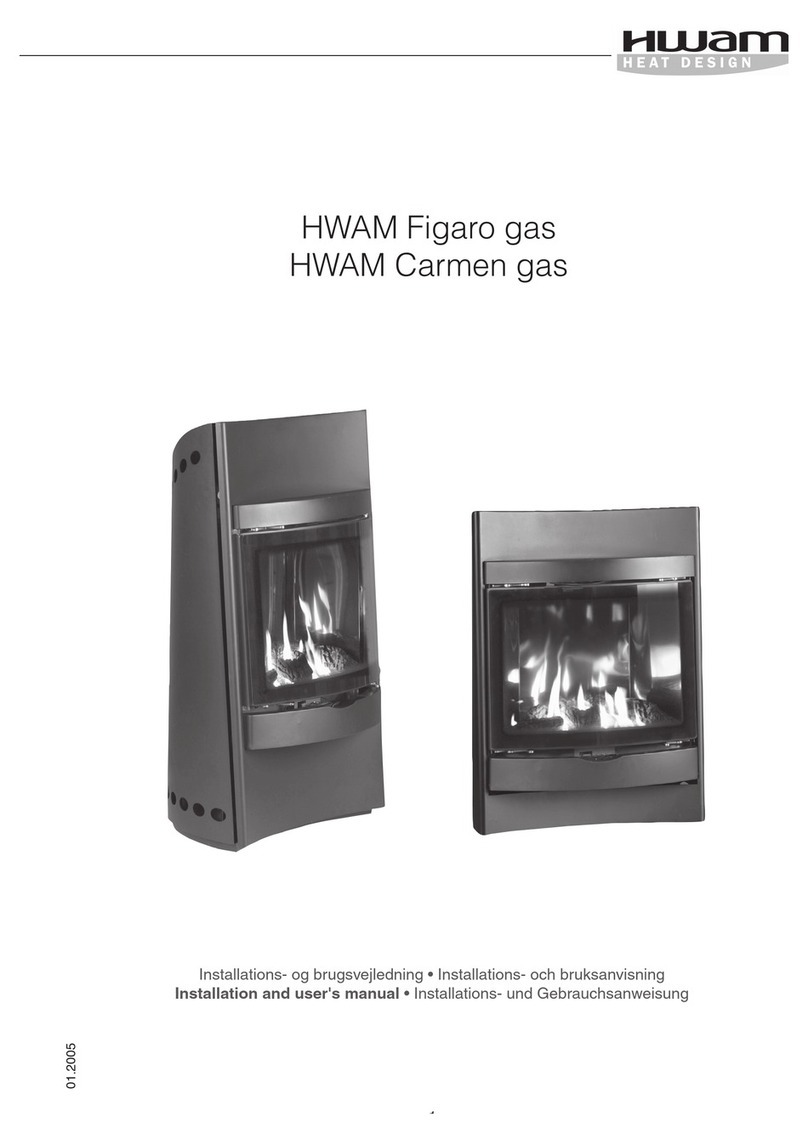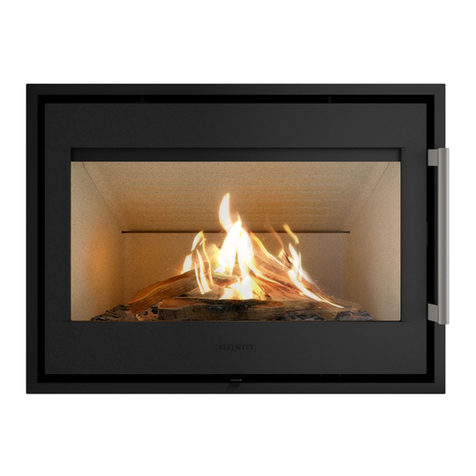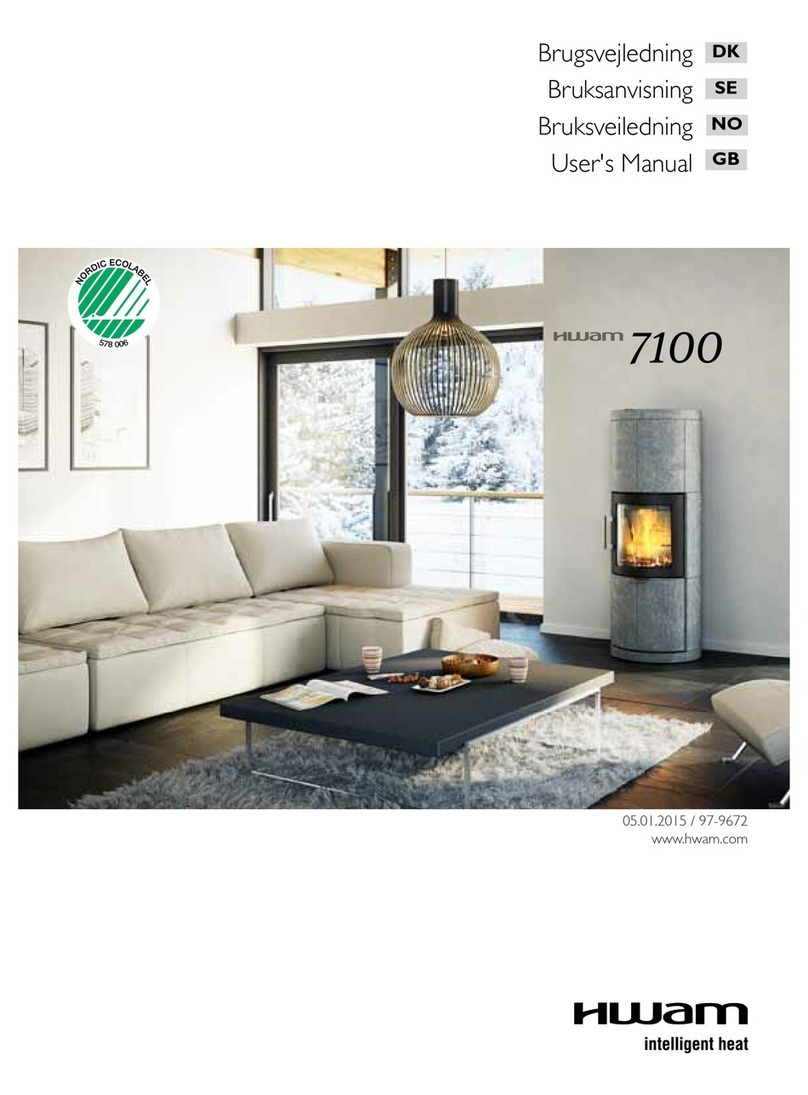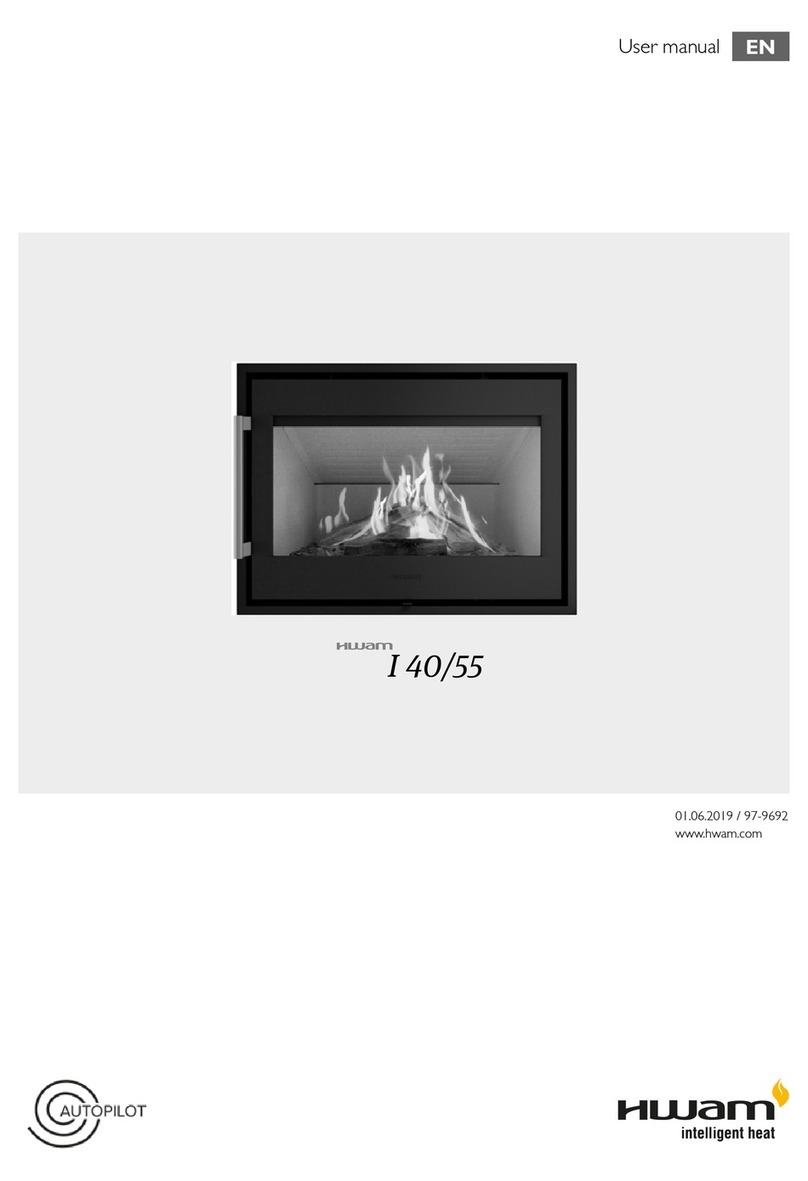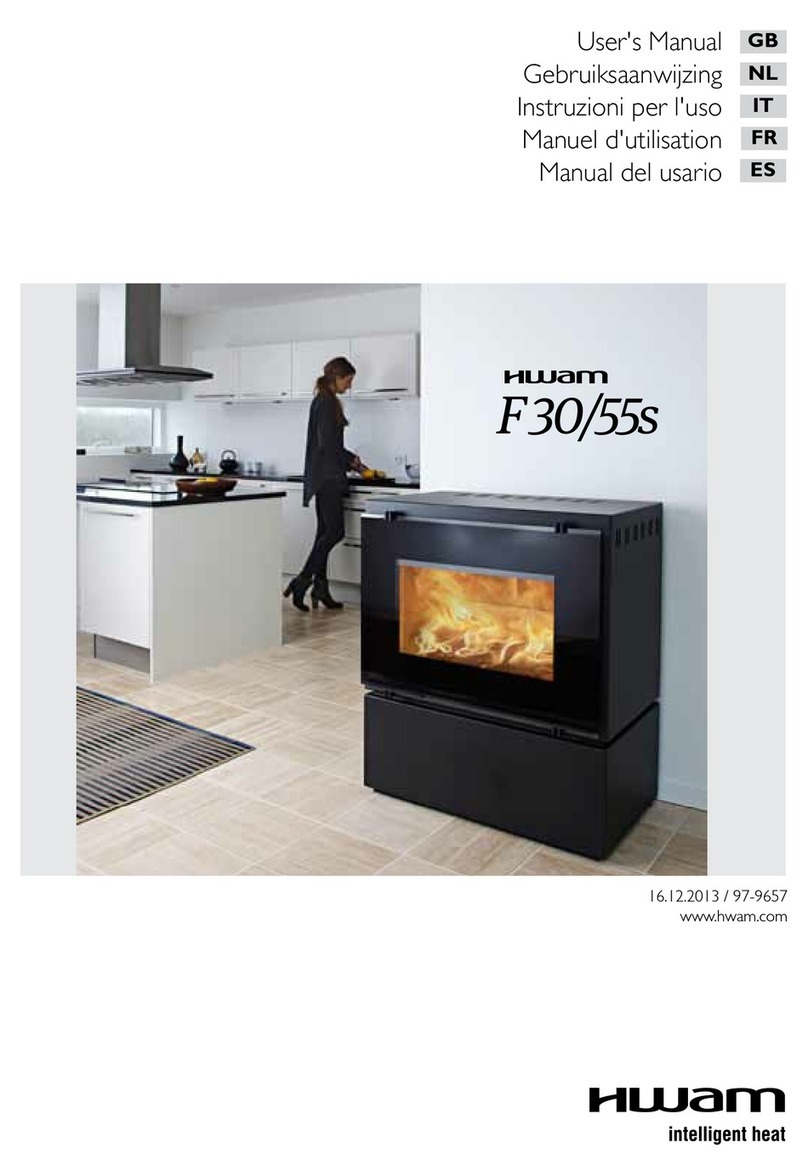
5
What to Do if You Have a Chimney Fire
If you realize a chimney fire is occurring, follow these steps:
• Get everyone out of the house, including yourself.
• Call the fire department. If you can do so without risk to yourself, these additional steps
may help save your home. Remember, however, that homes are replaceable, lives are
not.
• Close the air controls on the insert.
• Use a garden hose to spray down the roof (not the chimney) so the fire won’t spread
to the rest of the structure.
• Once it’s over, call a CSIA Certified Chimney Sweep to inspect for damage. Chimney
fire damage and repair is normally covered by homeowner insurance policies.
2. Installation
WARNING
IF YOUR HWAM WOOD-BURNING INSERT IS NOT PROPERLY INSTALLED, OPERATED
AND MAINTAINED, A HOUSE FIRE MAY RESULT. FOR YOUR SAFETY, FOLLOW ALL
INSTALLATION, OPERATION AND MAINTENANCE DIRECTIONS.
Pre-Installation Check List
Before you begin an installation, review your plans and check to see that:
• Your insert will be far enough from combustible material to meet all clearance
requirements.
• Thefloorprotectionislargeenoughandisconstructedproperlytomeetallrequirements.
• You have all necessary permits from your local authorities. Your local building official
is the final authority for approving your installation as safe and in determining that it
meets all local and state building and safety codes.
The metal label permanently attached to the back of every HWAM wood-burning insert shows
that it has been tested to current UL and ULC safety standards, and gives the name of
the testing laboratory. Clearance and installation information is also printed on the label.
Local authorities will generally accept the label as evidence that, when the insert is installed
according to the information on the label and in this manual, the installation meets codes and
can be approved.
This wood insert must be installed in a code-approved masonry chimney with a flue liner
or a UL 127/ULC S610 approved factory fireplace. The insert must fit inside the existing
fireplace opening with a gap of at least 3/16” (5 mm) on each side and the top. The
approved masonry or factory fireplace the combustion chamber and chimney of the fireplace
must not be modified by removing bricks, mortar or any metal parts that would affect the
thermal characteristics or safety of the fireplace in any way. If the existing fireplace has
been modified in any way attach the metal tag stating “This fireplace has been altered to
accommodate a fireplace insert and must be re-inspected by a qualified person prior to re-
use as a fireplace “ to the back of the existing fireplace with nails or screws where it will be
seen by anyone removing the insert. In Canada this fireplace insert must be installed with
a continuous chimney liner of 6.0” (153 mm) diameter extending from the fireplace insert to
the top of the chimney. The chimney liner must conform to the Class 3 requirements of CAN/
ULC-S636, Standard for Lining Systems for Existing Masonry or Factory-Built Chimneys
and Vents, or CAN/ULC-S640, Standard for Lining Systems for New Masonry Chimneys.


















